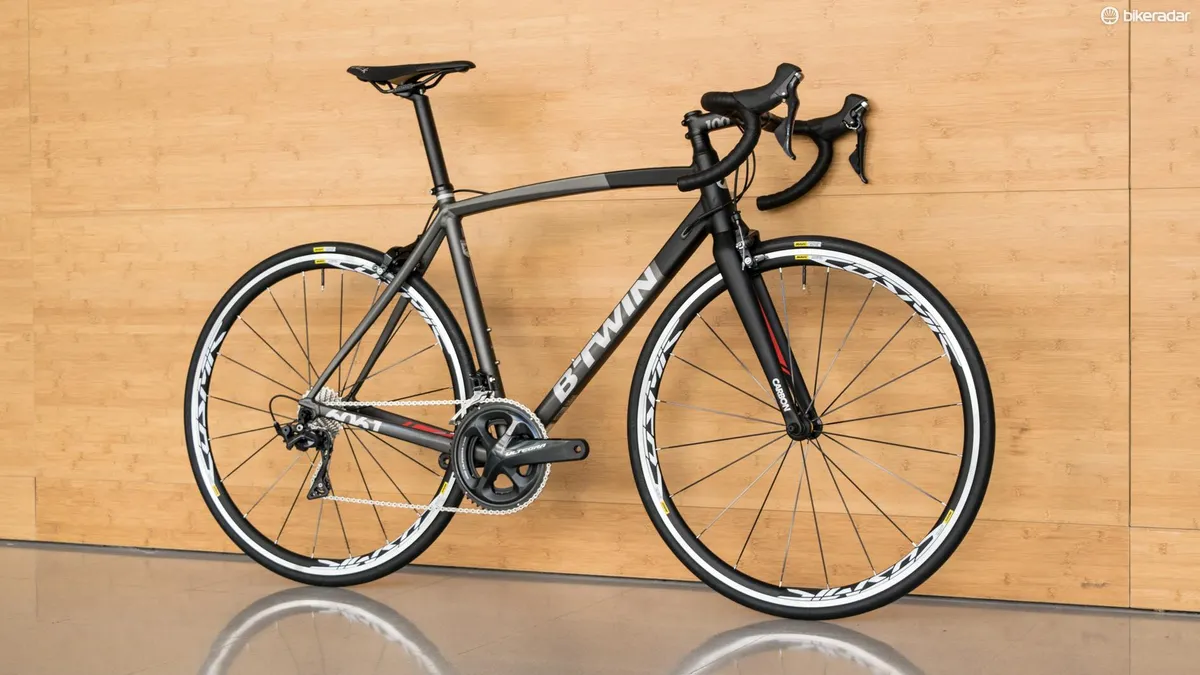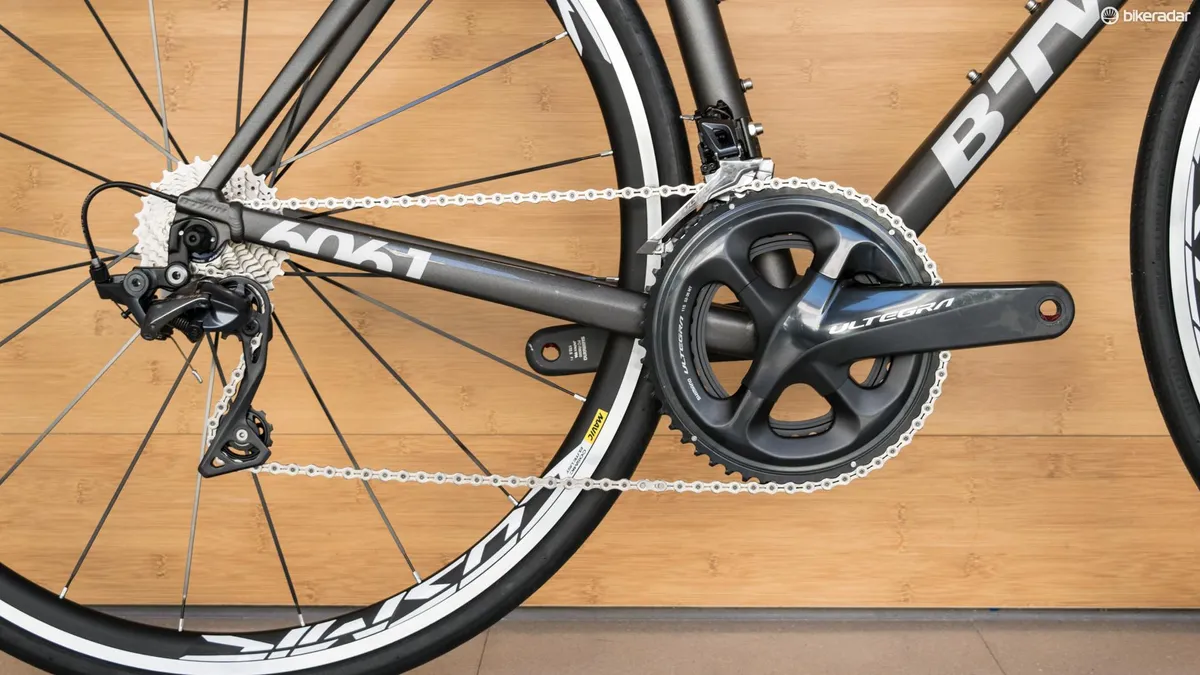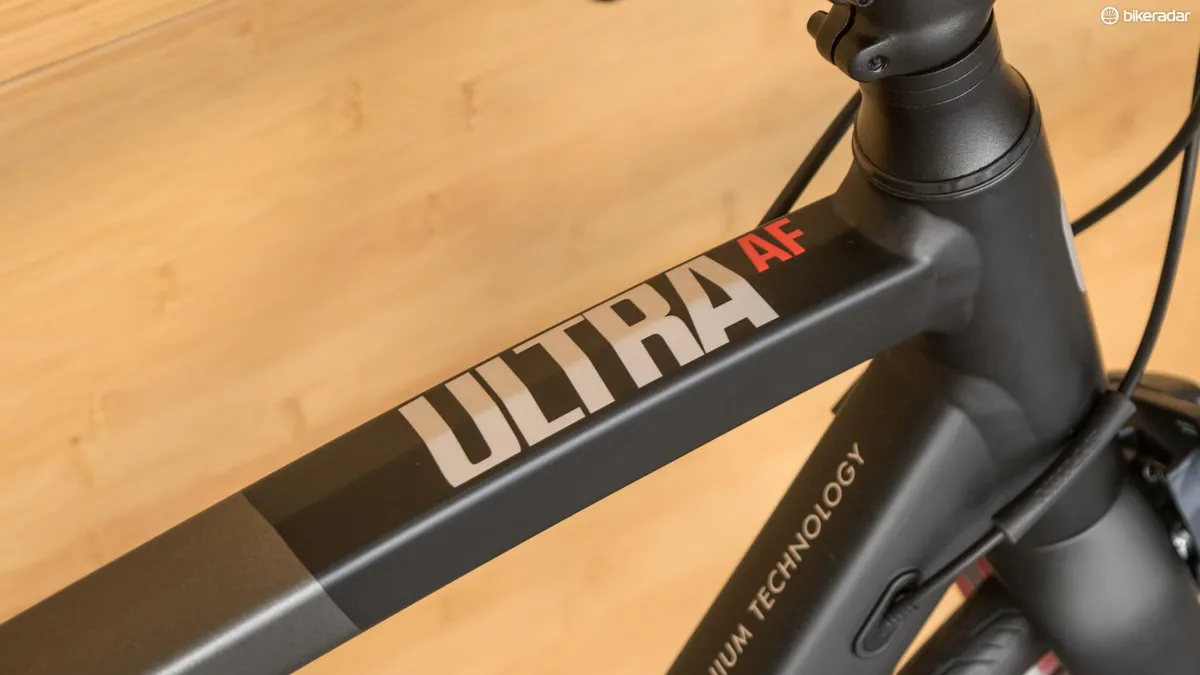Editor's note, August 2019: Decathlon shook up its range for 2019 and began to phase out the B'Twin name. The Ultra AF 920 has been replaced by the identically specced Van Rysel RR 920 AF. Paint aside, this is the exact same bike.
I reviewed the B'Twin Ultra AF in 2017 and I really, really liked it. It was a great ride and had an incredible spec. It also employed one of my least favourite design features: a rear brake hidden under the chainstays, which was inconvenient and prone to rubbing. The latest Ultra does away with this and it’s an absolute cracker.
- B'Twin is dead, long live B'Twin: big changes for 2018
- B’Twin Ultra 720 AF review
- We visited B’Twin Village and the Kool-Aid was delicious
The latest Ultra 920 AF (note that there’s been some juggling of model names) is more expensive than the old Ultegra-equipped Ultra 720 AF, but it gets Shimano’s newest R8000 groupset as well as a more up-to-date set of Mavic Cosmic Elite UST wheels.
At launch it was to be priced at £1,299 / €1,500, but Decathlon has since knocked £100 / €100 off that figure.
B'Twin Ultra 920 AF specs
- Weight: 8.6kg (medium)
- Frame: ALUR ALU 6061 aluminium
- Fork: Carbon w/alloy steerer
- Wheels: Mavic Cosmic Elite UST
- Tyres: Mavic Yksion Elite 25mm
- Crankset: Shimano Ultegra R8000 52/36t
- Bottom bracket: Shimano press-fit
- Shifters: Shimano Ultegra R8000
- Front derailleur: Shimano Ultegra R8000
- Rear derailleur: Shimano Ultegra R8000
- Cassette: Shimano Ultegra R8000 11-28t
- Chain: KMC X11
- Brakes: Shimano Ultegra R8000, direct mount front
- Handlebars: B'Twin alloy 42cm
- Stem: B'Twin alloy 100mm
- Saddle: Fizik Antares
- Seatpost: B'Twin alloy
The same frame, but better
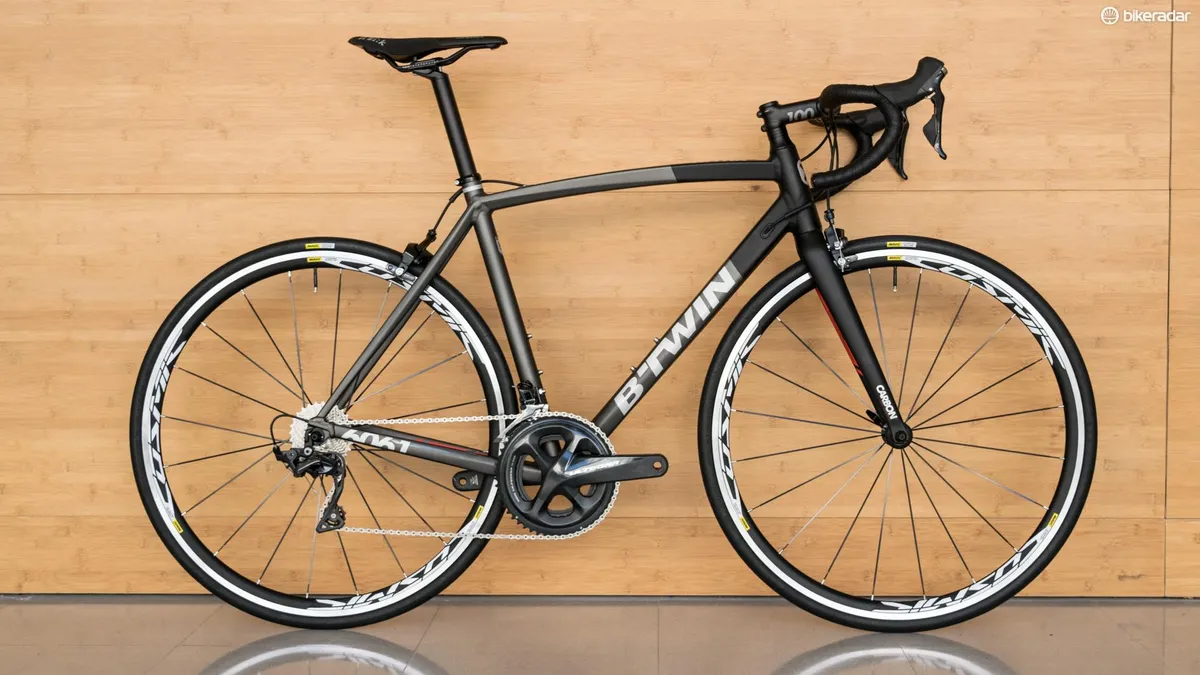
That rear brake aside, the Ultra AF’s frame hasn’t undergone major changes, which is a good thing.
It’s the same slightly boxy aluminium, which shares design cues with the pricier carbon Ultra CF range, but makes no secret of its construction, with welds on show.
The front triangle’s tube sections are somewhat burly but not comically oversized for stiffness, while the rear end is quite restrained, with dainty stays.
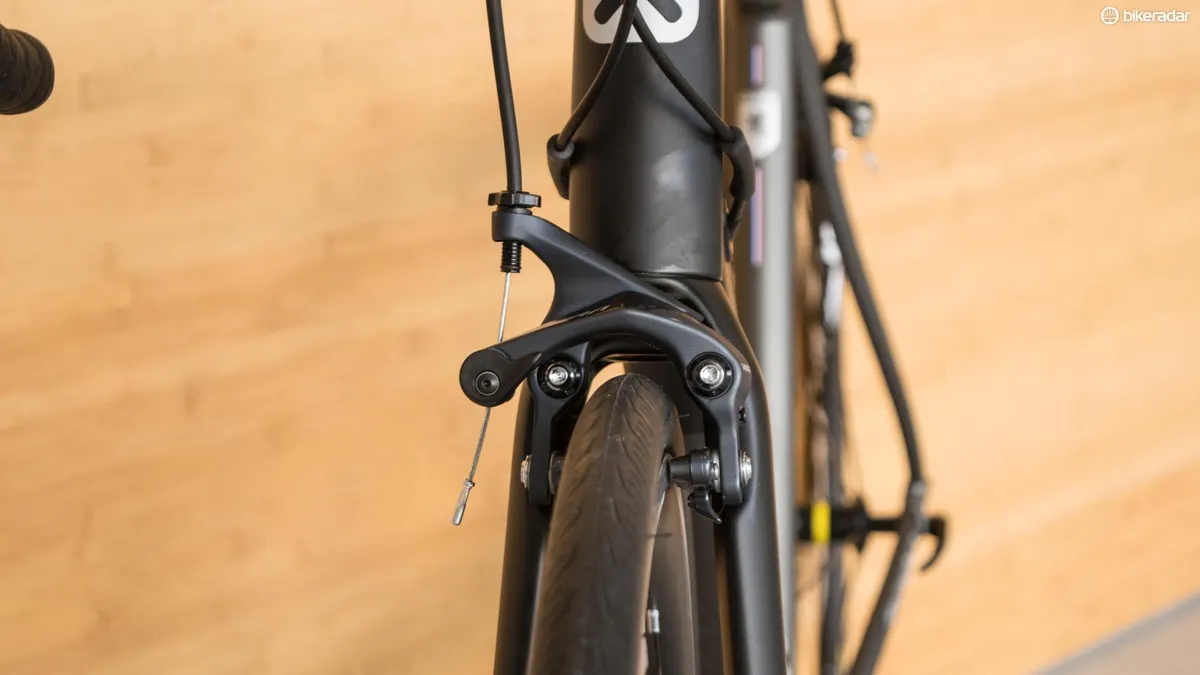
While the front brake is a super-stiff direct mount caliper, the rear is a standard unit and — praise be! — it’s in the usual place on the seatstays. This change was apparently influenced by the teams B’Twin works with, and also the moaning from journalists like me.
The standard brake arrangement means swapping out the rear wheel is extremely easy, as are adjustments to the caliper. It also locates the brake at a point on the rim that deflects less under lateral loads, meaning that brake rub is far less likely.
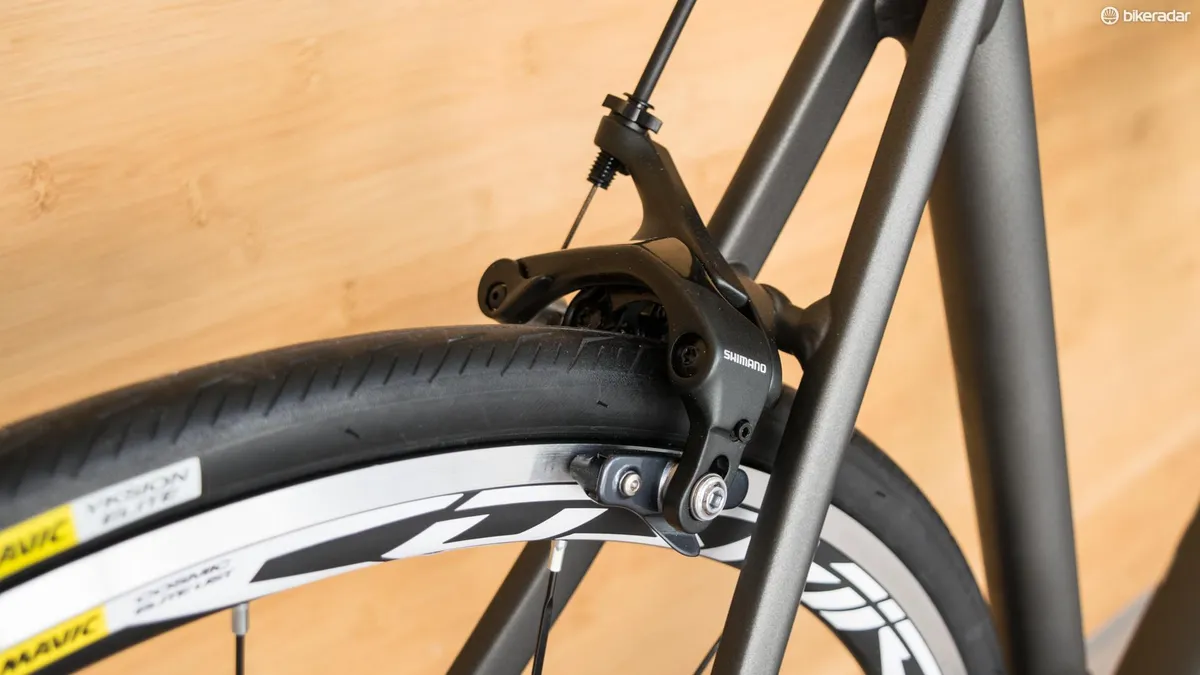
The subtly arched top tube doesn’t slope all that much, so most riders won’t have a foot of seatpost poking out of the frame.
It’s worth noting that the sizing is a touch larger than on some brands, but the small and medium frames both have a reach figure of 383mm.
B’Twin’s sizing chart would put me on a small with 529mm of stack, but I was perfectly happy with the less aggressive fit on my medium test bike, which has 556mm. It depends what sort of position you’re after, ultimately.
The build — a 5-star groupset and wider rims
Ultegra 6800 was a very accomplished groupset, but the latest R8000 is even better. B’Twin gives you a full complement of components, apart from the chain which comes from KMC and is not a substitution you’re going to notice on the road.
The wheels are new too. Mavic’s latest Cosmic Elite UST is wider than the old version at a nominal 17mm internal and is also tubeless compatible.
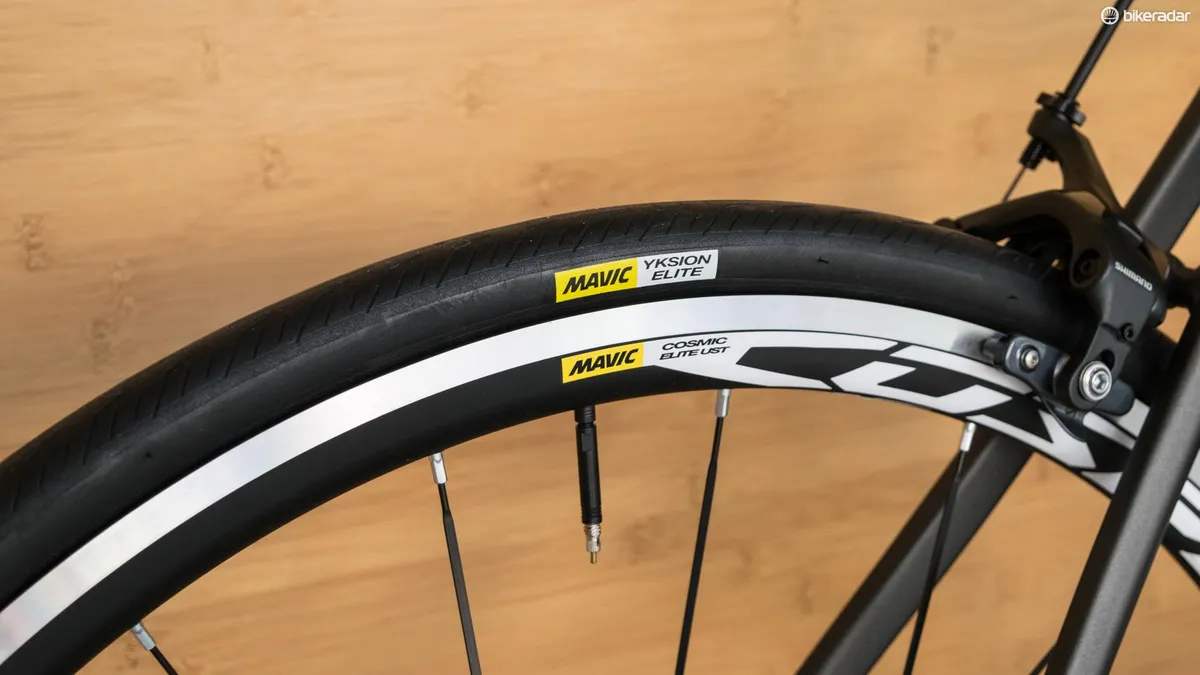
At a claimed weight of 1,770g they’re hardly exotic, but they’re a step up in bling and a touch deeper at 30mm than the entry-level wheels many bikes at this price level are specced with.
Ride impressions — as good as ever and also better
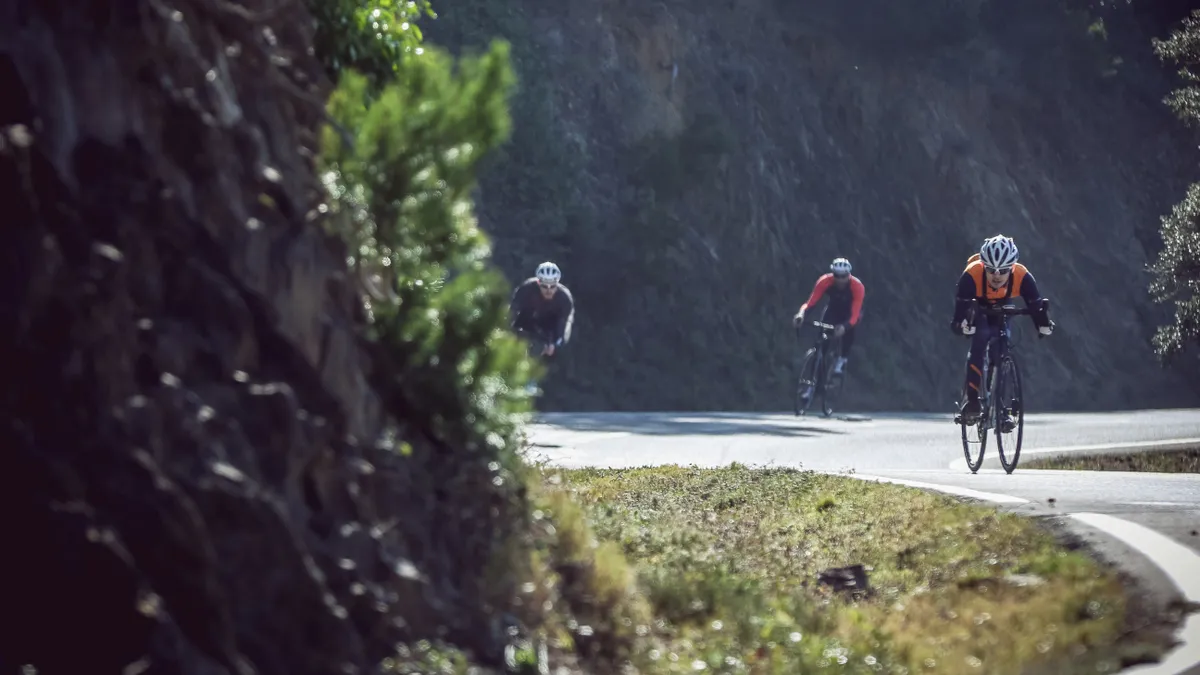
My short outing on the Ultra AF at the launch was gratifying in that it reinforced my previous, very positive impressions of this frame and subsequent rides have done nothing to dispel them.
Despite a fairly average total weight, the bike feels stiff and purposeful when you hoof it out of the saddle and it’s a pleasure on hilly terrain.
In terms of actual ride quality there is no discernible difference from previous versions of the bike.
It’s pretty damned smooth, on par with other good quality alloy frames, and less wooden than some cheap carbon ones.
The front end does chatter a bit on broken-up road surfaces and its relative firmness was quite noticeable on one particular stretch of rippled cycle path, but the overall experience is a good one.
Braking with the direct mount front caliper is extremely good and, while I haven’t had the chance to ride it in mucky conditions because the weather has been so persistently lovely, there hasn’t been a hint of brake rub from the rear in the dry.
Incidentally, Ultegra brakes have always been good, but I think there’s something quite special about the direct mount version. It provides exceptional levels of feel and power when combined with an alloy rim and genuinely enhances the riding experience.
I shouldn’t provoke the internet, but for fair weather riding, I don’t miss discs for a single second with this setup, not even for properly high-speed technical descending.
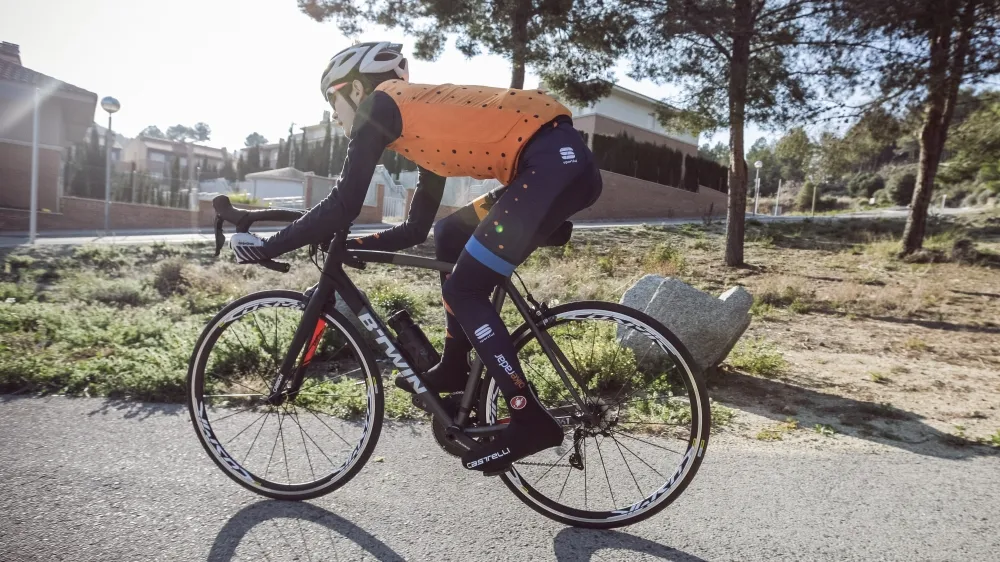
On that note, the Ultra is really very good at going down hills. It’s stiff and pointy, and I’ve taken some pleasure in going hard on the brakes coming into tight bends and then trailing them off as I lean over and bring the bike round.
On the launch, a couple of corners featured both tightening radius and increasing camber, making for some mild squeaky-bum moments, but the Ultra was sufficiently poised and predictable that I felt confident I wasn’t going to bin it. It’s proved equally at home riding on twisty Gloucestershire lanes.
I really like the Ultra AF. It’s a touch more expensive than it used to be but that’s entirely consistent with the rest of the industry, and the updates it’s received really have improved an already highly-accomplished bike.
